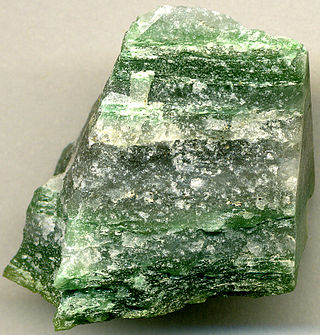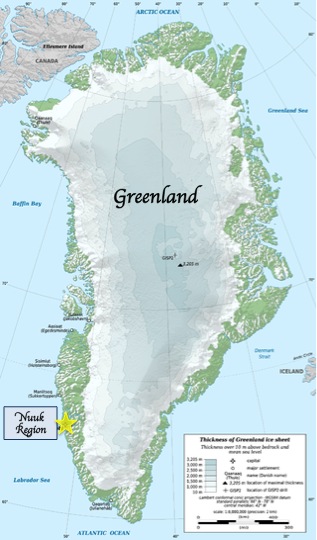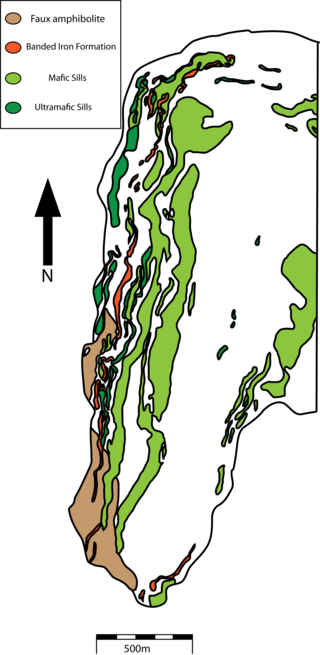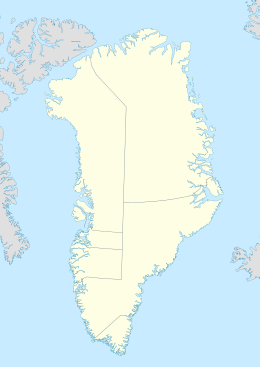The Precambrian is the earliest part of Earth's history, set before the current Phanerozoic Eon. The Precambrian is so named because it preceded the Cambrian, the first period of the Phanerozoic Eon, which is named after Cambria, the Latinised name for Wales, where rocks from this age were first studied. The Precambrian accounts for 88% of the Earth's geologic time.
Sedimentology encompasses the study of modern sediments such as sand, silt, and clay, and the processes that result in their formation, transport, deposition and diagenesis. Sedimentologists apply their understanding of modern processes to interpret geologic history through observations of sedimentary rocks and sedimentary structures.

Stratigraphy is a branch of geology concerned with the study of rock layers (strata) and layering (stratification). It is primarily used in the study of sedimentary and layered volcanic rocks. Stratigraphy has three related subfields: lithostratigraphy, biostratigraphy, and chronostratigraphy.

The Eoarchean is the first era of the Archean Eon of the geologic record. It spans 400 million years, from the end of the Hadean Eon 4 billion years ago to the start of the Paleoarchean Era 3600 Mya. The beginnings of life on Earth have been dated to this era and evidence of archaea and cyanobacteria date to 3500 Mya, comparatively shortly after the Eoarchean. At that time, the atmosphere was without oxygen and the pressure values ranged from 10 to 100 bar.

The Jack Hills are a range of hills in Mid West Western Australia. They are best known as the source of the oldest material of terrestrial origin found to date: Hadean zircons that formed around 4.404 billion years ago. These zircons have enabled deeper research into the conditions on Earth in the Hadean eon. In 2015, "remains of biotic life" were found in 4.1 billion-year-old rocks there. According to one of the researchers, "If life arose relatively quickly on Earth ...then it could be common in the universe."

The Isua Greenstone Belt is an Archean greenstone belt in southwestern Greenland, aged between 3.7 and 3.8 billion years. The belt contains variably metamorphosed mafic volcanic and sedimentary rocks, and is the largest exposure of Eoarchaean supracrustal rocks on Earth. Due to its age and low metamorphic grade relative to many Eoarchaean rocks, the Isua Greenstone Belt has become a focus for investigations on the emergence of life and the style of tectonics that operated on the early Earth.

The Slave Craton is an Archaean craton in the north-western Canadian Shield, in Northwest Territories and Nunavut. The Slave Craton includes the 4.03 Ga-old Acasta Gneiss which is one of the oldest dated rocks on Earth. Covering about 300,000 km2 (120,000 sq mi), it is a relatively small but well-exposed craton dominated by ~2.73–2.63 Ga greenstones and turbidite sequences and ~2.72–2.58 Ga plutonic rocks, with large parts of the craton underlain by older gneiss and granitoid units. The Slave Craton is one of the blocks that compose the Precambrian core of North America, also known as the palaeocontinent Laurentia.
Cap carbonates are layers of distinctively textured carbonate rocks that occur at the uppermost layer of sedimentary sequences reflecting major glaciations in the geological record.
Supracrustal rocks are rocks that were deposited on the existing basement rocks of the crust, hence the name. They may be further metamorphosed from both sedimentary and volcanic rocks.

Greenland is the largest island on Earth. Only one-fifth of its surface area is exposed bedrock, the rest being covered by ice. The exposed surface is approximately 410,000 km2.

John P. Grotzinger is the Fletcher Jones Professor of Geology at California Institute of Technology and chair of the Division of Geological and Planetary Sciences. His works primarily focus on chemical and physical interactions between life and the environment. In addition to biogeological studies done on Earth, Grotzinger is also active in research into the geology of Mars and has made contributions to NASA's Mars Exploration Program.

The Nuvvuagittuq Greenstone Belt is a sequence of metamorphosed mafic to ultramafic volcanic and associated sedimentary rocks located on the eastern shore of Hudson Bay, 40 km southeast of Inukjuak, Quebec. These rocks have undergone extensive metamorphism, and represent some of the oldest surface rocks on Earth.

The Late Heavy Bombardment (LHB), or lunar cataclysm, is a hypothesized event thought to have occurred approximately 4.1 to 3.8 billion years (Ga) ago, at a time corresponding to the Neohadean and Eoarchean eras on Earth. According to the hypothesis, during this interval, a disproportionately large number of asteroids and comets collided with the early terrestrial planets in the inner Solar System, including Mercury, Venus, Earth and Mars. These came from both post-accretion and planetary instability-driven populations of impactors. Although it used to be widely accepted, it remained difficult to provide an overwhelming amount of evidence for the hypothesis. However, recent re-appraisal of the cosmo-chemical constraints indicates that there was likely no late spike in the bombardment rate.

The Barberton Greenstone Belt of eastern South Africa contains some of the most widely accepted fossil evidence for Archean life. These cell-sized prokaryote fossils are seen in the Barberton fossil record in rocks as old as 3.5 billion years. The Barberton Greenstone Belt is an excellent place to study the Archean Earth due to exposed sedimentary and metasedimentary rocks.

Pre-collisional Himalaya is the arrangement of the Himalayan rock units before mountain-building processes resulted in the collision of Asia and India. The collision began in the Cenozoic and it is a type locality of a continental-continental collision. The reconstruction of the initial configuration of the rock units and the relationship between them is highly controversial, and major concerns relate to the arrangements of the different rock units in three dimensions. Several models have been advanced to explain the possible arrangements and petrogenesis of the rock units.

Eoarchean geology is the study of the oldest preserved crustal fragments of Earth during the Eoarchean era from 4 to 3.6 billion years ago. Major well-preserved rock units dated Eoarchean are known from three localities, the Isua Greenstone Belt in Southwest Greenland, the Acasta Gneiss in the Slave Craton in Canada, and the Nuvvuagittuq Greenstone Belt in the eastern coast of Hudson Bay in Quebec. From the dating of rocks in these three regions scientists suggest that plate tectonics could go back as early as Eoarchean.

Hadean zircon is the oldest-surviving crustal material from the Earth's earliest geological time period, the Hadean eon, about 4 billion years ago. Zircon is a mineral that is commonly used for radiometric dating because it is highly resistant to chemical changes and appears in the form of small crystals or grains in most igneous and metamorphic host rocks.

Archean felsic volcanic rocks are felsic volcanic rocks that were formed in the Archean Eon. The term "felsic" means that the rocks have silica content of 62–78%. Given that the Earth formed at ~4.5 billion year ago, Archean felsic volcanic rocks provide clues on the Earth's first volcanic activities on the Earth's surface started 500 million years after the Earth's formation.
The Akia terrane is a tectonostratigraphic terrane located in the North Atlantic Craton in southern West Greenland. The Akia terrane is bounded to the Southeast by the Eo- to Neo-archaean tectonostratigraphic terranes of the Nuuk region, and to the North by the recently recognised Alanngua Complex, which separates the Akia terrane from the Neoarchaean Tuno terrane. The crust in the Akia terrane formed in two major pulses. The first at ~3.2 Ga, predominantly comprises dioritic gneisses, whereas the second, at ~3.0 Ga comprises a more diverse mix of TTG and dioritic gneisses with enclaves of supracrustal rocks and mafic-ultramafic intrusions. Supracrustal rocks are largely tholeiitic and calc-alkaline amphibolites formed at ~3.07 Ga. The mafic-ultramafic intrusions include peridotite cumulates and a belt of noritic intrusions formed at the same time as the TTG gneisses, the Maniitsoq Norite Belt. Various tectonic settings have been proposed for the 3.0 Ga crust forming event, including subduction related magmatism, stagnant lid tectonic processes, and crust and mantle melting in an ultra-hot orogeny.

The Dharwar Craton is an Archean continental crust craton formed between 3.6-2.5 billion years ago (Ga), which is located in southern India and considered as the oldest part of the Indian peninsula.















